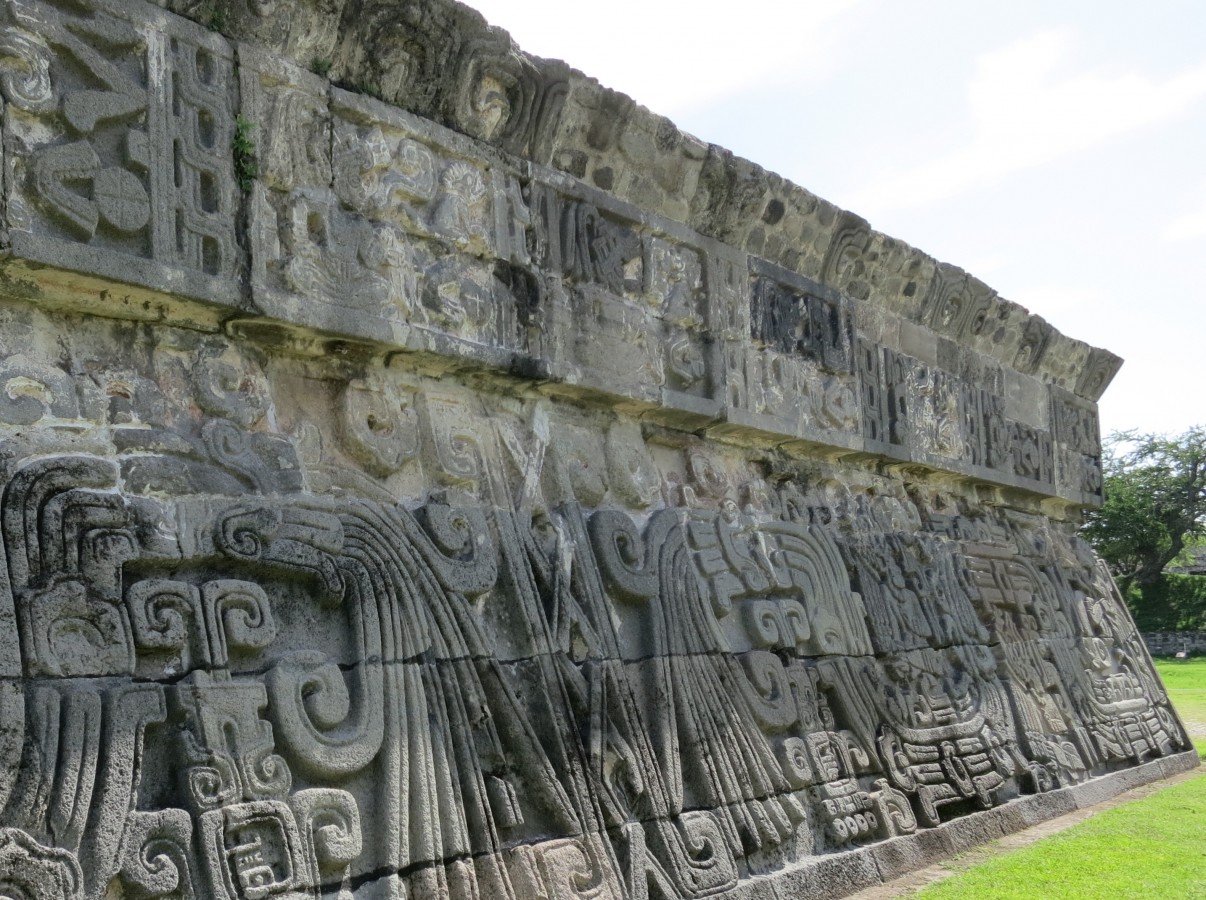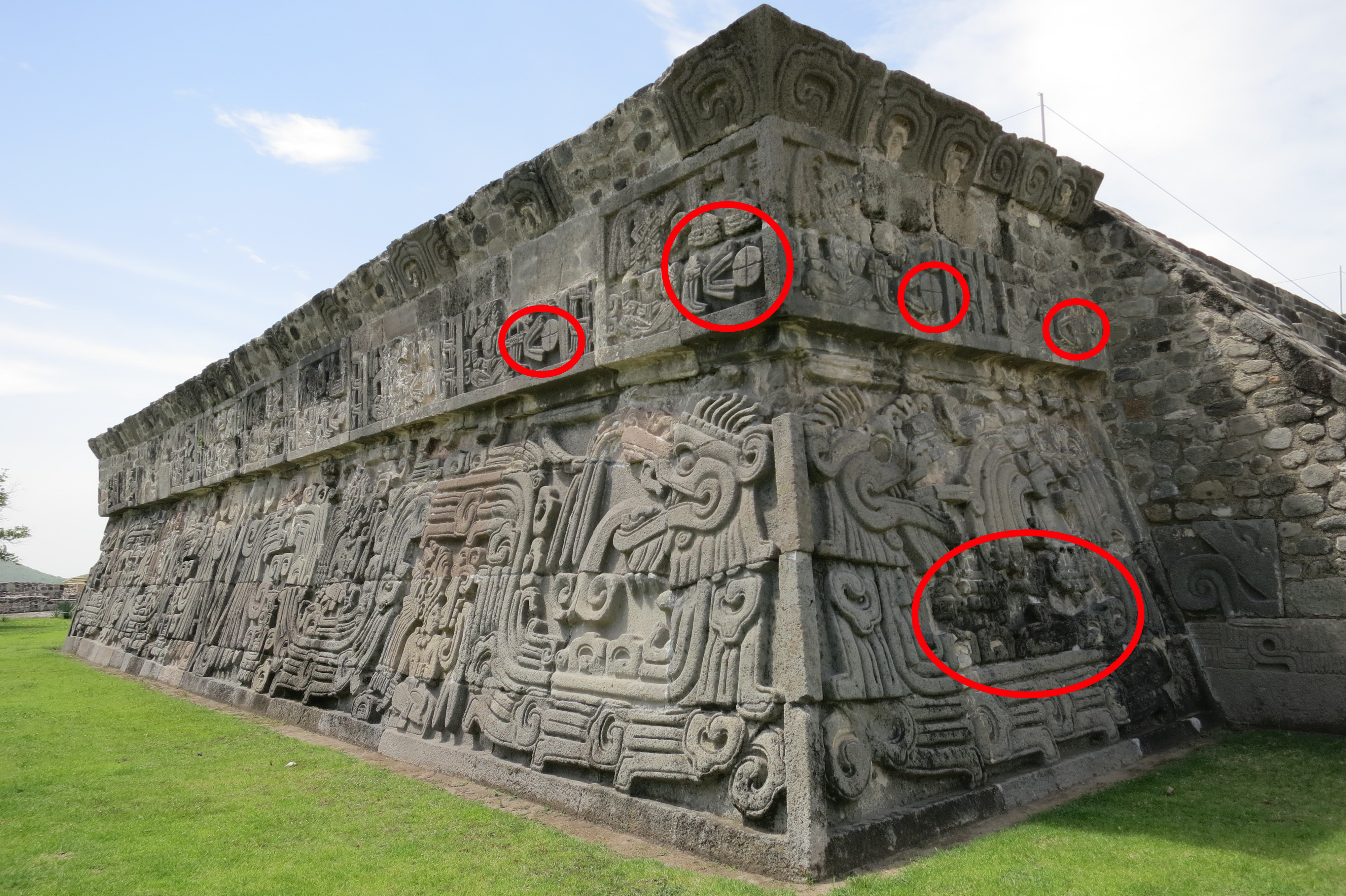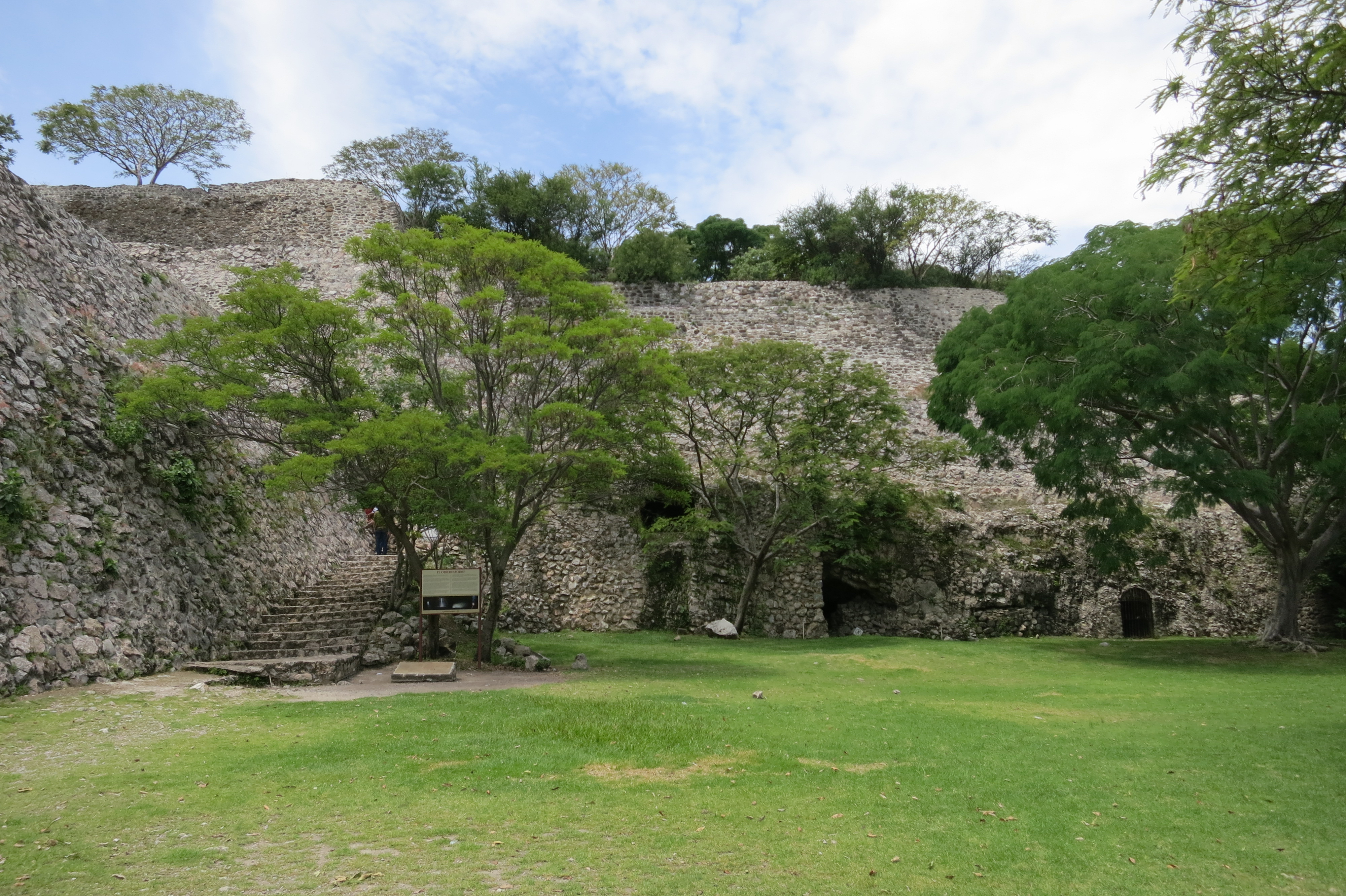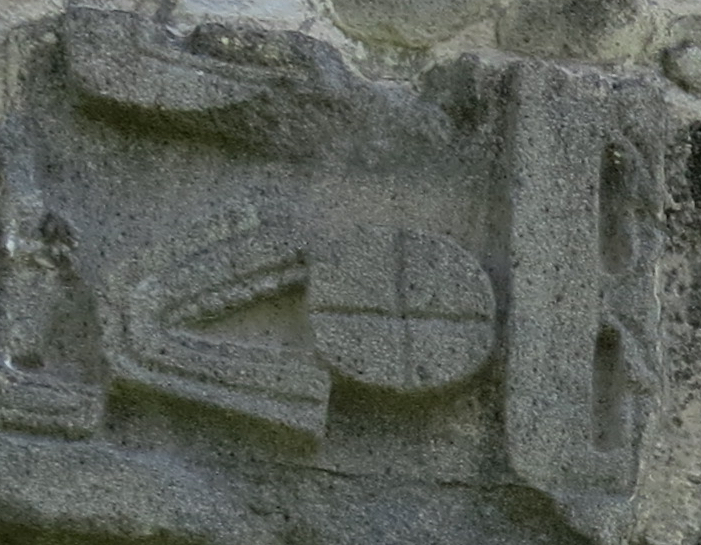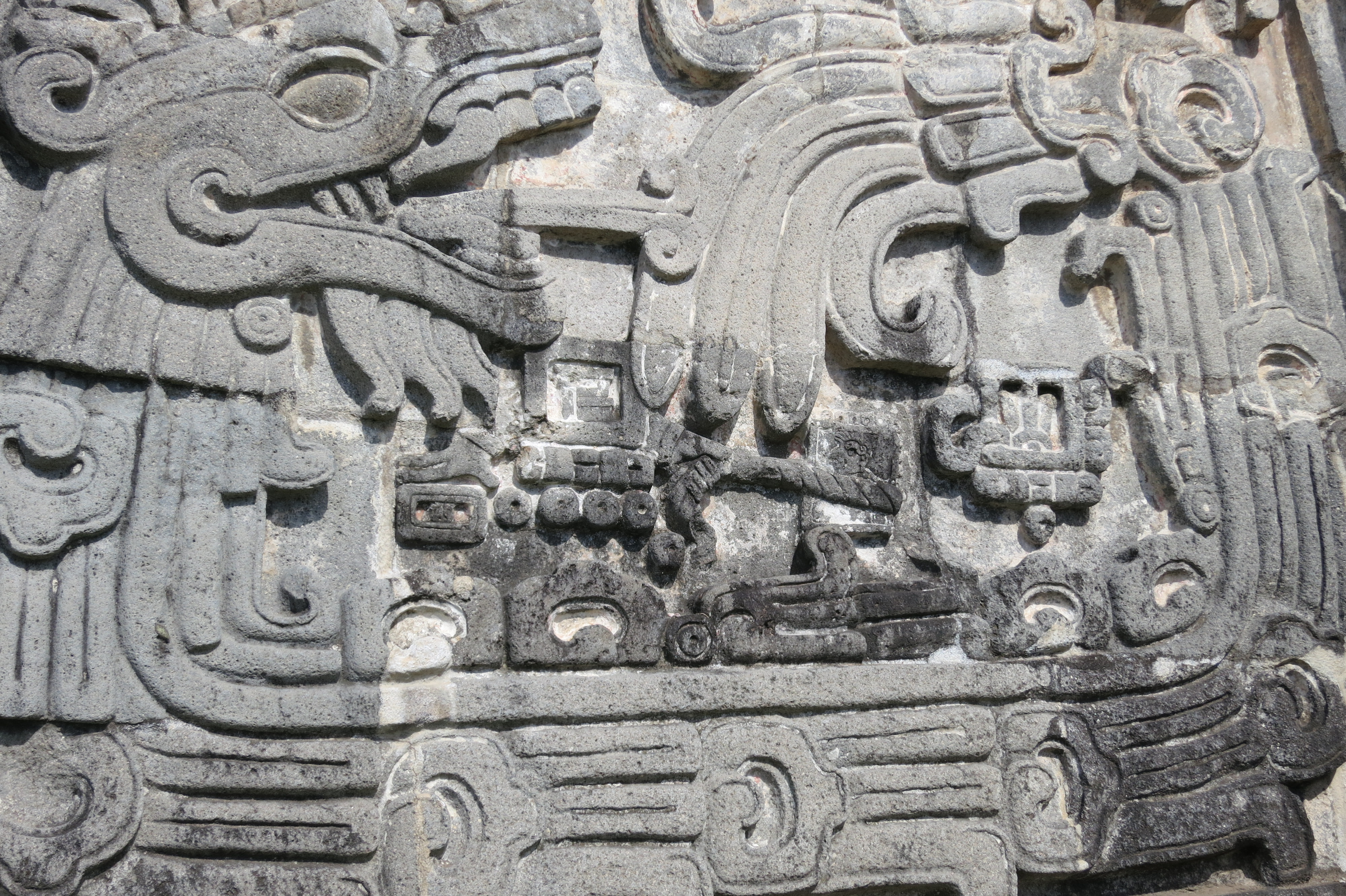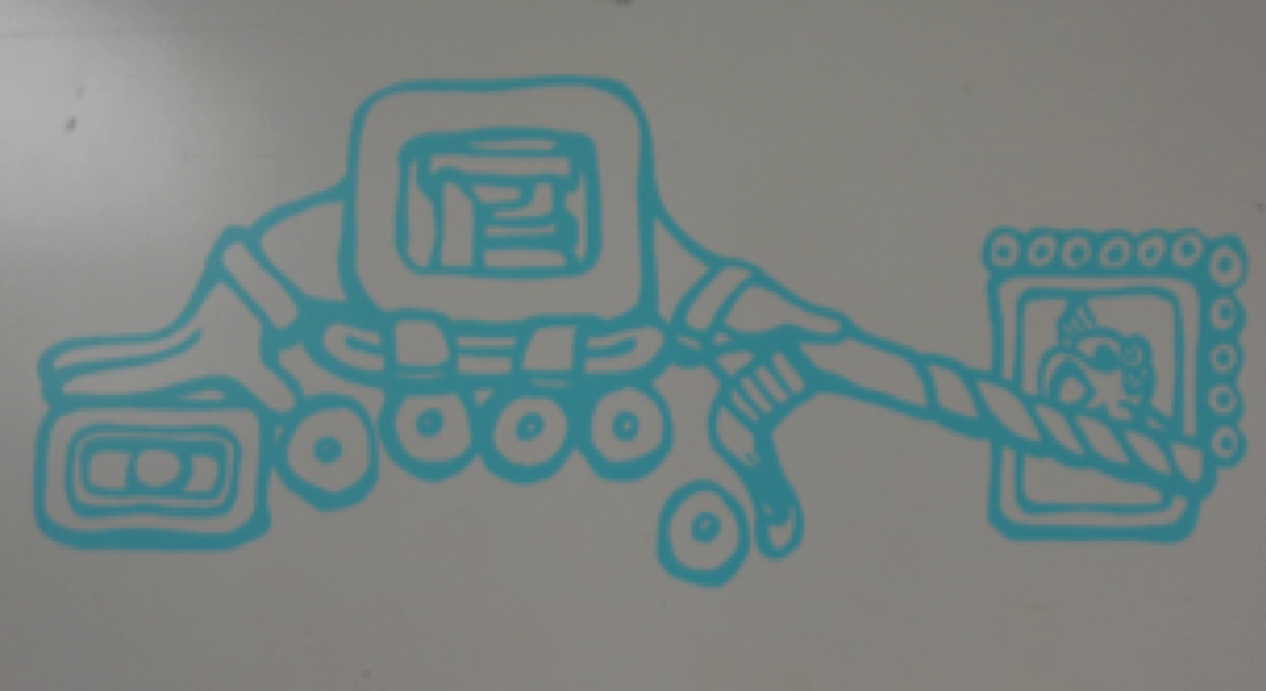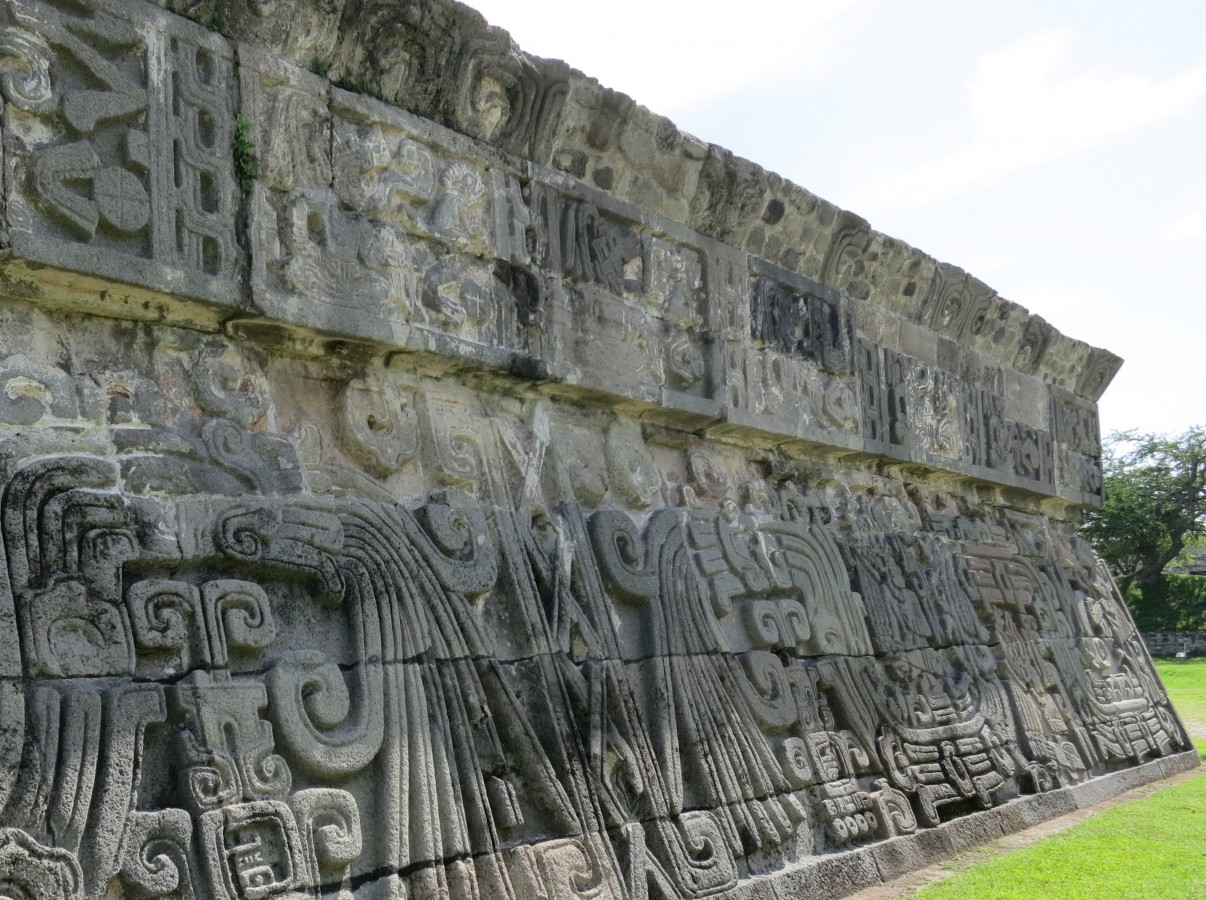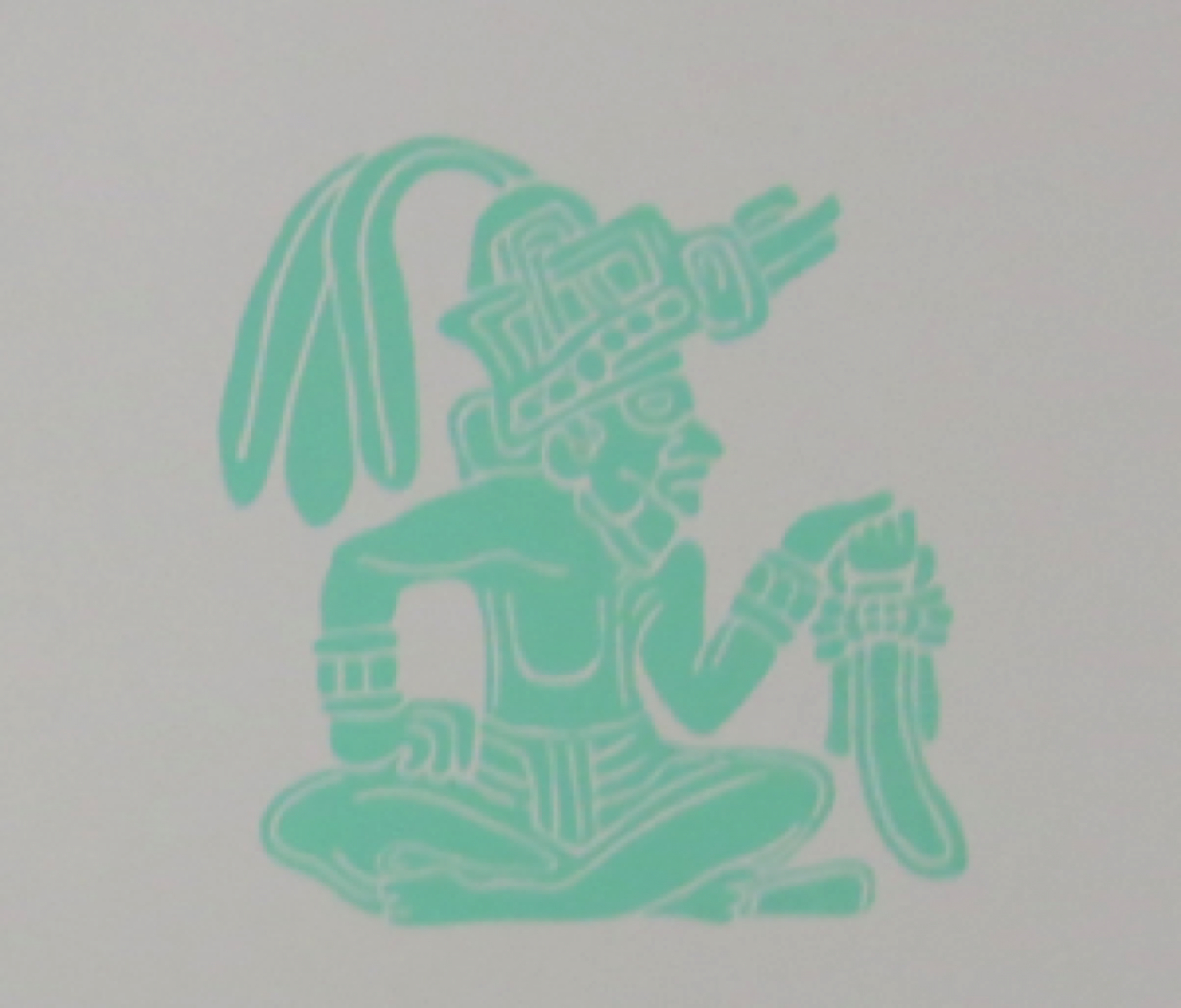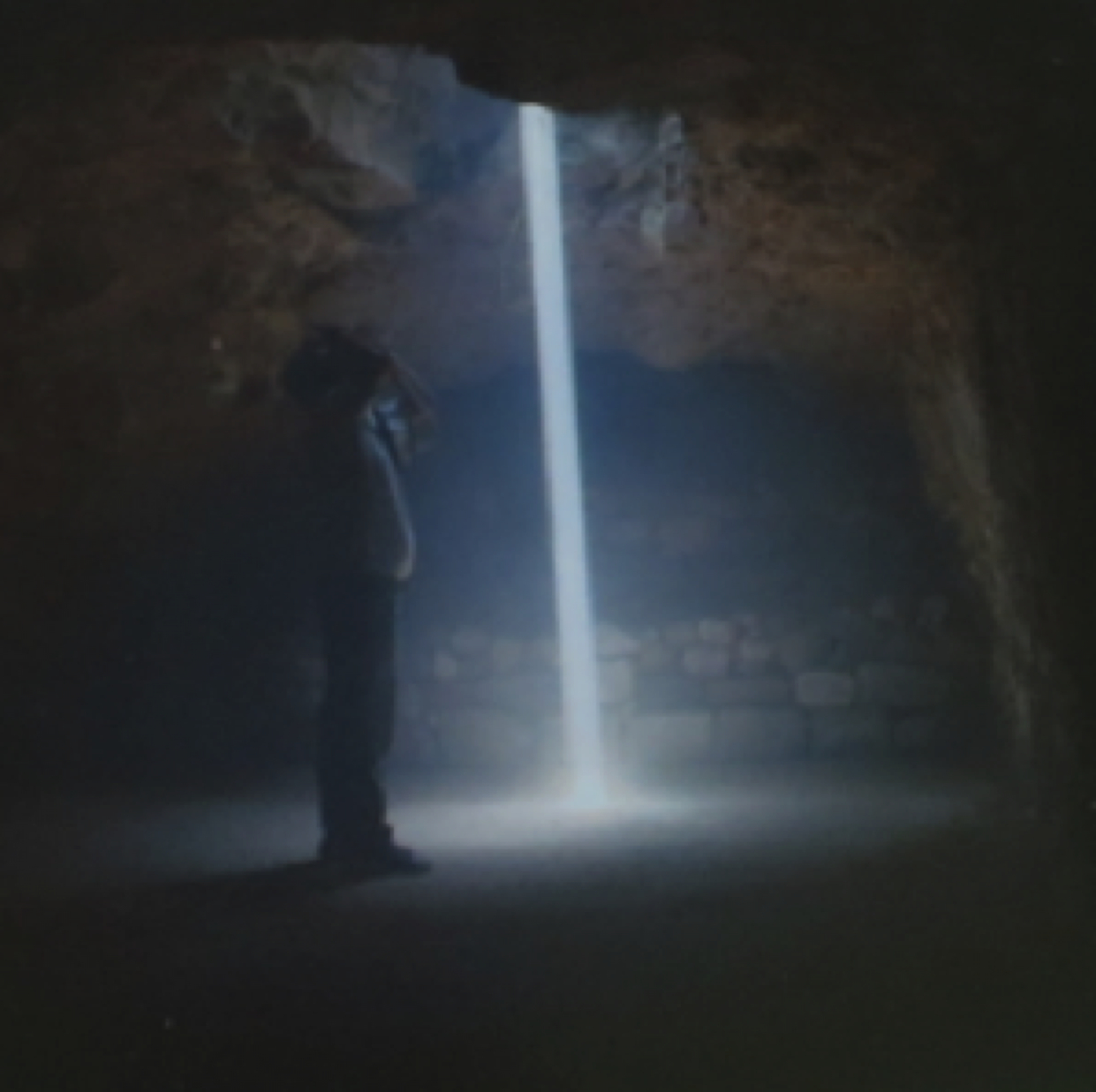Xochicalco is famous for two buildings: the Pyramid of the Feathered Serpents and the Observatory. Experts have identified a glyph on the Pyramid depicting a total eclipse of the Sun which occurred in 743 and was perhaps the reason for building the pyramid (and even the city itself). This glyph is repeated throughout the Pyramid, which shows how important it was. However, there is another important depiction. It shows a figure pulling one calendar date with its left hand towards another date below its right hand. Although there is no consensus on the meaning of this depiction, experts appear to concur that this means an adjustment to the calendar. All calendars, even modern ones, have a margin of error due to leap years and small inaccuracies in the measurement of time that lead to a shift in the long term. This means that an important ceremony or agricultural task would not occur on the correct day. Our own calendar had to be adjusted 400 years ago because it was so inaccurate that Jesus Christ’s birth date no longer coincided with the real one.
The calendar was even more important in the pre-Hispanic world. It dictated people’s fortunes from the day they were born; it specified the date on which certain rituals had to be performed to maintain balance in the universe and it indicated the most appropriate times to sow and harvest. Even auspicious dates for getting married or starting a battle had to be exact.
Why was it adjusted at Xochicalco? Because of the Observatory. This is a vertical tunnel or shaft excavated in the stone towards a “cave” yards below, which allowed the position of the sun and stars to be tracked. The cave is fully illuminated on March 14 and 15, and is illuminated to a lesser extent from April 19 to August 16 every year. This precision instrument makes Xochicalco special.
Why at that time? Probably because the solar eclipse, being cyclical, marked a special day: it could only happen on that date. It allowed the cumulative error to be corrected. This is why the figure who is pulling the dates together is interpreted as a depiction of that adjustment.
It is rather surprising because it happened over 1,300 years ago. However, what is even more surprising is that the Pyramid of Feathered Serpents depicts figures from other regions, some very far away, several of which were in competition (if not direct conflict) with Xochicalco and amongst themselves, to the extent that they are shown in defensive positions (such as hilltops). If this interpretation is correct, their presence in Xochicalco on the event of the eclipse shows that they could put their individual differences aside to achieve something that benefited everyone: correcting the calendar that controlled their lives.
This is why Xochicalco is key. It reminds us that everybody wins when we put the common good before our individual differences. Visiting it responsibly and participating as citizens to preserve it will enable Xochicalco to endure as a permanent reminder of this important idea.
Place
Studying the Heavens Solved Problems on Earth (Thanks to the Xochicalco Observatory)
Xochicalco reminds us that everybody wins when we put the common good before our individual differences.
References
Silvia Garza y Norberto González (QEPD) son los arqueólogos que más trabajo de campo han hecho en Xochicalco, por lo que sus publicaciones resultan una referencia indispensable. Beatriz de la Fuente y otros autores han comentado en particular sobre la iconografía del sitio. Y Enrique Florescano ha propuesto una interpretación alternativa a lo ofrecida aquí, ya que siguiendo a otra arqueóloga, lo considera no como corrección, sino como un acto de conquista. Los textos propuestos son una buena manera de seguir aprendiendo sobre este importante sitio.
- Garza Tarazona, S., y González Crespo, N., 1995, "Xochicalco", en Wimer, J., La Acrópolis de Xochicalco, México, Varia Gráfica y Comunicación.
- De la Fuente, B., 1995, "Xochicalco: Una cima cultural", en Wimer, J., La Acrópolis de Xochicalco, México, Varia Gráfica y Comunicación.
- Florescano, Enrique, 2003, “La difusión del emblema de la Serpiente emplumada”, La Jornada, México, Desarrollo de medios. http://www.jornada.unam.mx/2003/04/15/quet-texto.html.

